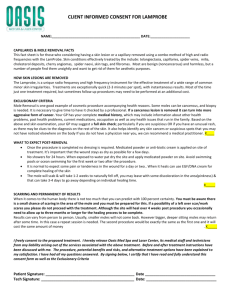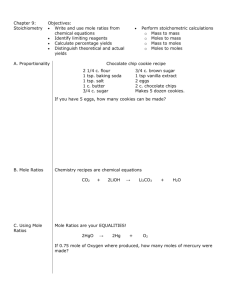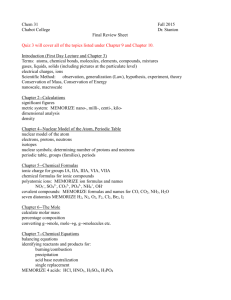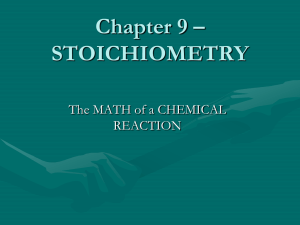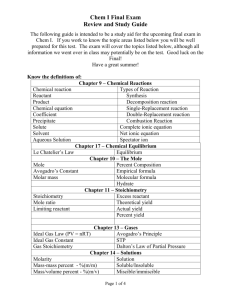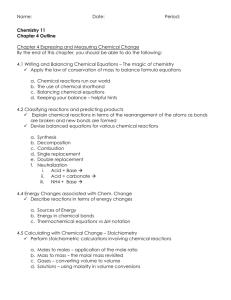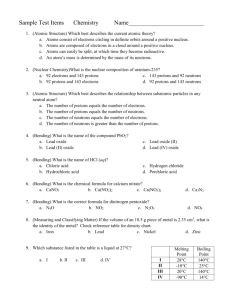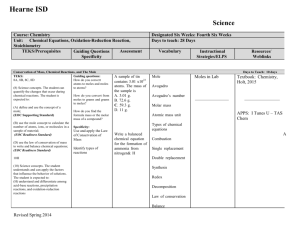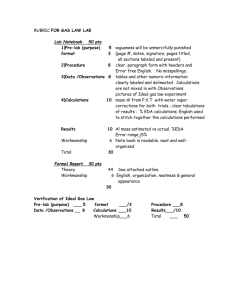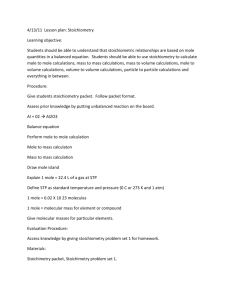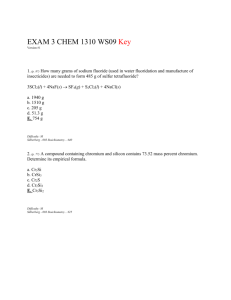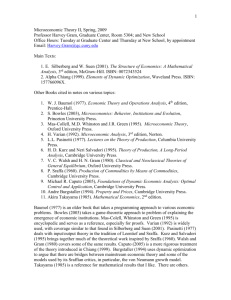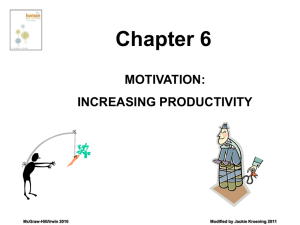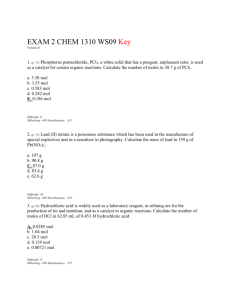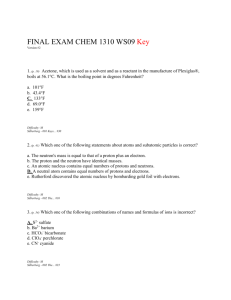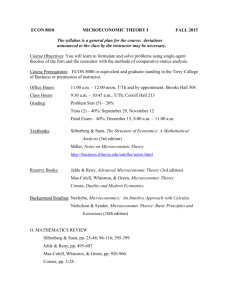Grade 11 Chemistry Westgate Mennonite Collegiate Ms. Heidi
advertisement
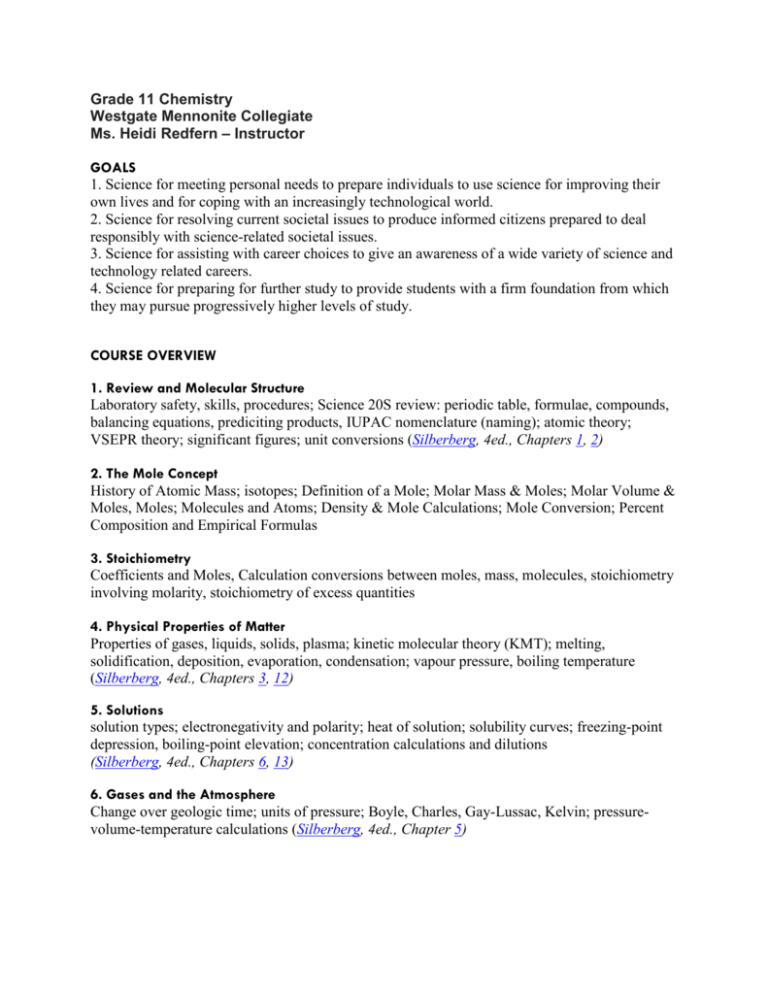
Grade 11 Chemistry Westgate Mennonite Collegiate Ms. Heidi Redfern – Instructor GOALS 1. Science for meeting personal needs to prepare individuals to use science for improving their own lives and for coping with an increasingly technological world. 2. Science for resolving current societal issues to produce informed citizens prepared to deal responsibly with science-related societal issues. 3. Science for assisting with career choices to give an awareness of a wide variety of science and technology related careers. 4. Science for preparing for further study to provide students with a firm foundation from which they may pursue progressively higher levels of study. COURSE OVERVIEW 1. Review and Molecular Structure Laboratory safety, skills, procedures; Science 20S review: periodic table, formulae, compounds, balancing equations, prediciting products, IUPAC nomenclature (naming); atomic theory; VSEPR theory; significant figures; unit conversions (Silberberg, 4ed., Chapters 1, 2) 2. The Mole Concept History of Atomic Mass; isotopes; Definition of a Mole; Molar Mass & Moles; Molar Volume & Moles, Moles; Molecules and Atoms; Density & Mole Calculations; Mole Conversion; Percent Composition and Empirical Formulas 3. Stoichiometry Coefficients and Moles, Calculation conversions between moles, mass, molecules, stoichiometry involving molarity, stoichiometry of excess quantities 4. Physical Properties of Matter Properties of gases, liquids, solids, plasma; kinetic molecular theory (KMT); melting, solidification, deposition, evaporation, condensation; vapour pressure, boiling temperature (Silberberg, 4ed., Chapters 3, 12) 5. Solutions solution types; electronegativity and polarity; heat of solution; solubility curves; freezing-point depression, boiling-point elevation; concentration calculations and dilutions (Silberberg, 4ed., Chapters 6, 13) 6. Gases and the Atmosphere Change over geologic time; units of pressure; Boyle, Charles, Gay-Lussac, Kelvin; pressurevolume-temperature calculations (Silberberg, 4ed., Chapter 5) 7. Organic Chemistry Structural characteristics of carbon; IUPAC nomenclature; alkanes, alkenes, alkynes; saturated and unsaturated, functional groups(alcohols, organic acids, esters, etc.), polymers; hydrogenation, dehydrogenation, esterification, polymerization (Silberberg, 4ed., Chapter 15) TEXTBOOK/NOTES There is no textbook for this course. The course is based on class notes, but there are several excellent web-based resources that students may access for extra help. http://misterguch.brinkster.net/explains2.html (main gr.11 source) www.colgurchemistry.com (main gr.12 source) These websites are referred to frequently in class and are the source of many of our worksheets. Answer keys to class worksheets are often available online at these sites or from a link from the course’s homework page. POLICIES All rules in the student handbook apply. Students are to observe ALL SAFETY RULES at all times, as outlined in class. Failure to do so will result in your removal from the classroom and a zero for that lab. Attendance at class is required. Students are reminded that school policy states that students failing to attend class may lose their credit. Students are responsible to catch up on all work missed when absent. GERMAN EXCHANGE STUDENTS Students going on German exchange must meet all course requirements prior to departure for Germany; otherwise they will not receive course credit and must take the course in summer school to receive credit. ACADEMIC HONESTY Students are expected to exhibit commitment to learning and to behaviour that reflects the school's philosophy of openness and mutual respect. Students are expected to take personal responsibility for their behaviour in all areas of school life, and to be honest in their relations with other students and staff. Students are expected to submit work that is original and represents their own best efforts. Students are expected to acknowledge the sources of ideas and information, whether directly quoted or paraphrased, using either the MLA (see the student agenda book) or Chicago style. LAB PROCEDURES AND REPORTS Laboratory experiments will be conducted individually or in groups of two or three, at the discretion of the instructor. If you make a mistake, simply cross out the error and record the correct data as neatly as possible; NO WHITE-OUT. Complete all calculations, graphs and questions, plus provide a discussion and brief conclusion related to the purpose of the lab. Further details will be announced in class during the lab activities. ASSESSMENT Values reflect the depth of a particular unit. Each unit mark will be a combination of quizzes, assignments, labs and a unit test. 1. Review and Molecular Structure 2. The Mole Concept 3. Stoichiometry 4. Physical Properties of Matter 5. Solutions 6. Gases and the Atmosphere 7. Organic Chemistry 10% 15% 10% 10% 15% 10% 10% TOTAL TERM + EXAM FINAL GRADE 80% 20% (no exemptions) 100% Please note that term marks are cumulative. Bonus: Each week a scientist of the week (or two) will be available for 5% bonus on your total. There will be enough slots for everyone in class to have the opportunity to complete this bonus assignment, however, later slots may be in high demand, so sign up early! (Better yet, complete this task on one of the early dates.) If a slot is left blank, that scientist is gone for good and no extra slots will be created later on in the semester.


